Arts and Science
Published:
The Unbearable Slowness of Being, 2024
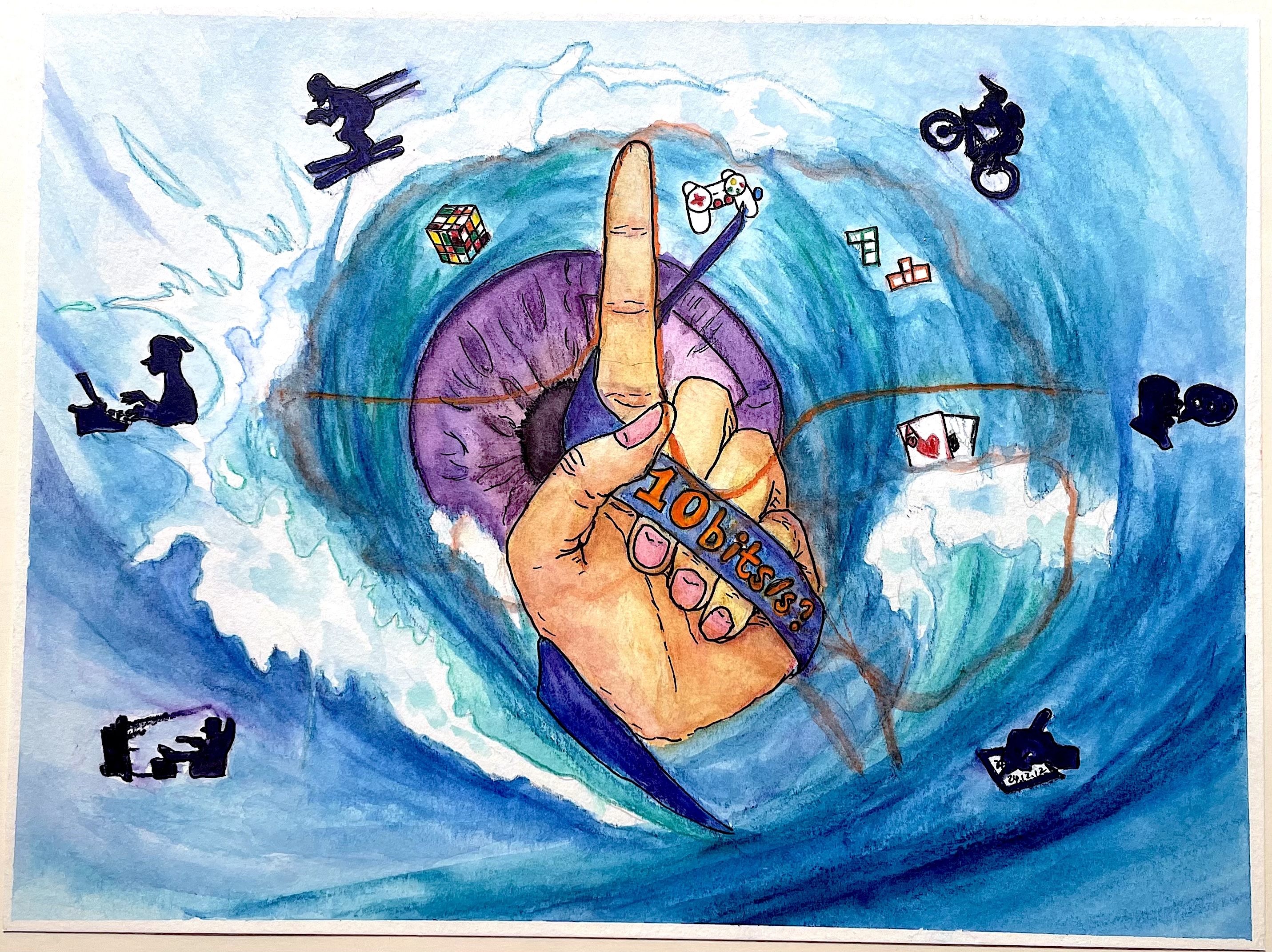
Created during the drawing and painting class PVS062 2024.
The neurotecher tote bag, 2024

This tote bag was designed by me as part of the Neurotechers Art Contest. The artwork depicts a dynamic rivalry between the biological intelligence (Neuro) and artificial intelligence (Tech). The biological rat “Neuro” sends an action potential through a head stage. The neural signal is transmitted via the Caltech brain-machine interface, highlighting our collective efforts in the field. The robotic rat receives the signal and emits a low-pass filter voltage profile. The two rats are engaged in a game of Go: the biological rat makes the first move (playing with black stones), and the robotic rat catches up (playing with white stones). The game copies a segment of the historic last match between AlphaGo and Lee Sedol, where AlphaGo ultimately won.
The Unbearable Slowness of Being, 2021
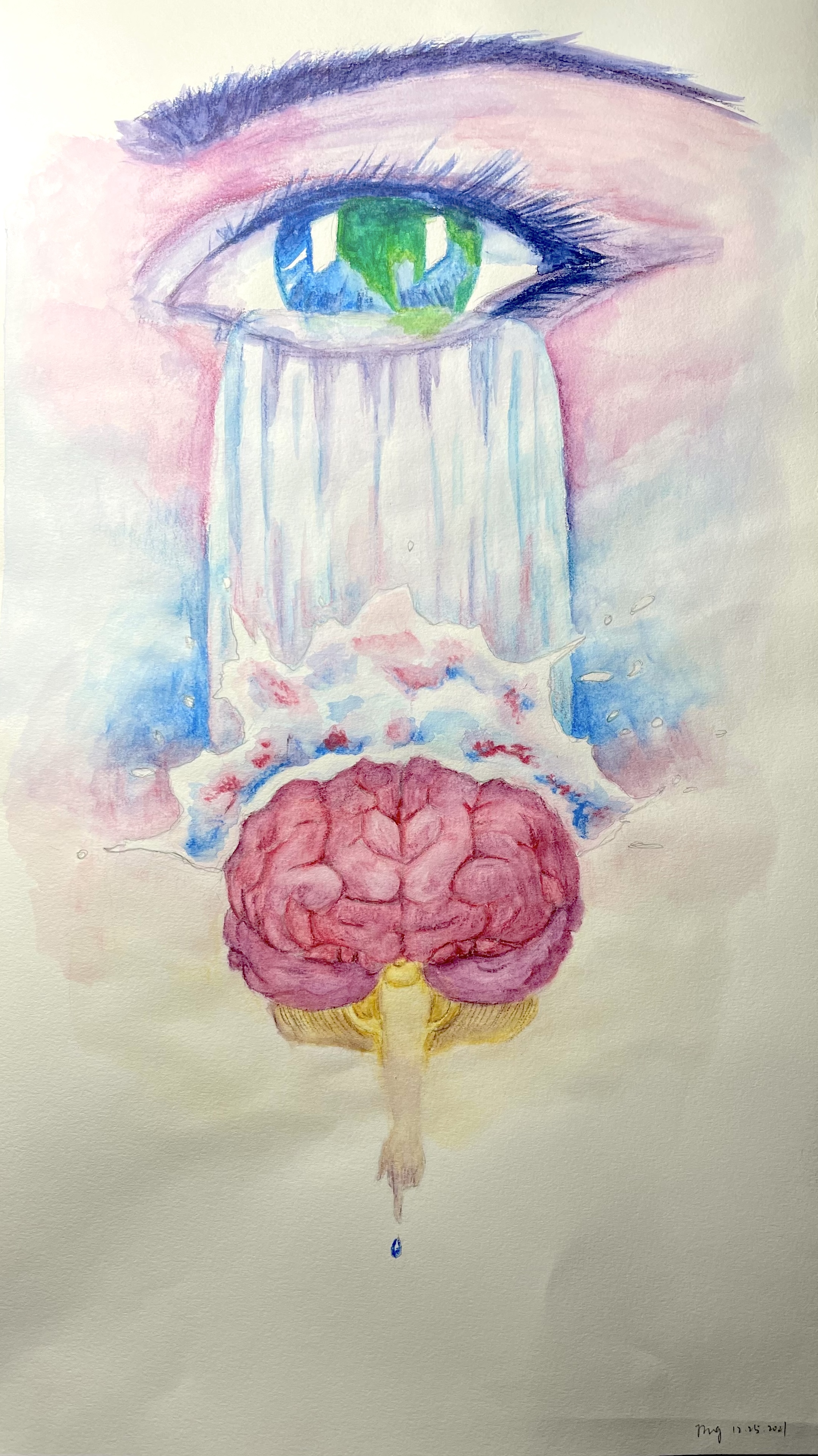
Selected artwork by the Caltech Science and Art Contest (2022). Check out our opinion piece “the Unbearable Slowness of Being” via this link!
ChatGPT interpretation of this painting, assisted by the artist’s input:
The painting provides a thought-provoking commentary on the vast disparity between the input and output capacities of the human brain. The painting, with its central eye above the brain, may visually interpret this idea. The eye, often considered a window to the world, represents the sensory system, gathering vast amounts of data from the environment. This is symbolized by the full, vibrant green of the iris and the rich detail within it.
In contrast, the waterfall of tears transitioning into the brain could illustrate the process of data compression, where the massive inflow of sensory information is distilled into a far smaller stream of behavioral output. The brain, depicted in a more subdued palette, might be seen as a filter or a crucible, reducing the flood of sensory input into the trickle of conscious thought and action, represented by the single tear drop falling away from the brain.
The artist seems to question the efficiency or perhaps the necessity of this compression. Why does the brain reduce such a wide bandwidth of information into a mere 10 bits per second of output? It’s a powerful visual metaphor for the complexity and selectivity of human thought, consciousness, and the still-mysterious processes of the brain that determine how we perceive and interact with the world. The artwork could be inviting viewers to ponder the sophistication of the human brain, the value of the information processed, and the selective nature of our conscious actions.
Neurotechers, 2021
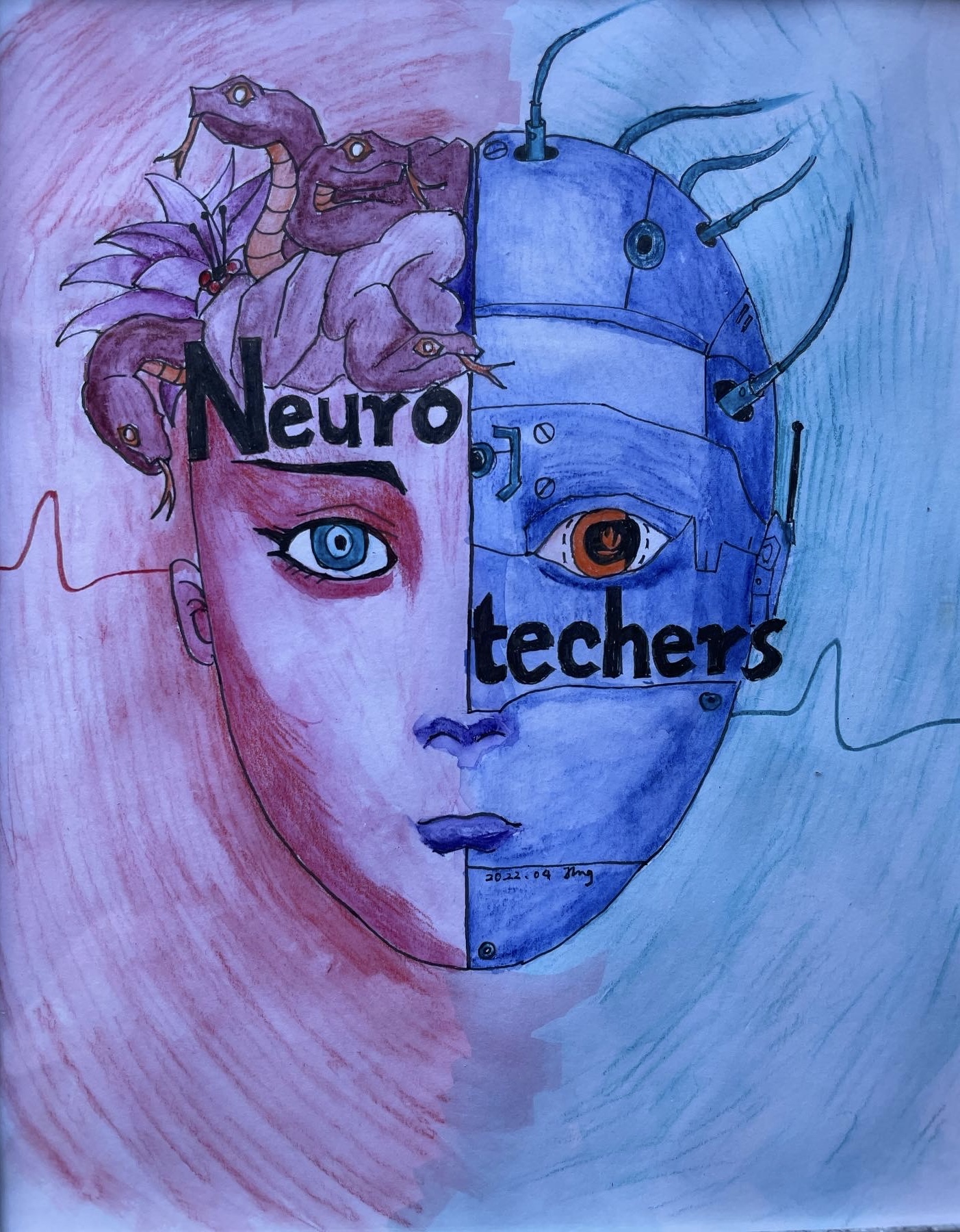
My winning design for the t-shirt design contest for the Caltech Neurotechers club. Prof. Pietro Perona once commented that this painting looks “creepy” and that I should try a different theme.
Caltech Logo, my version, 2020

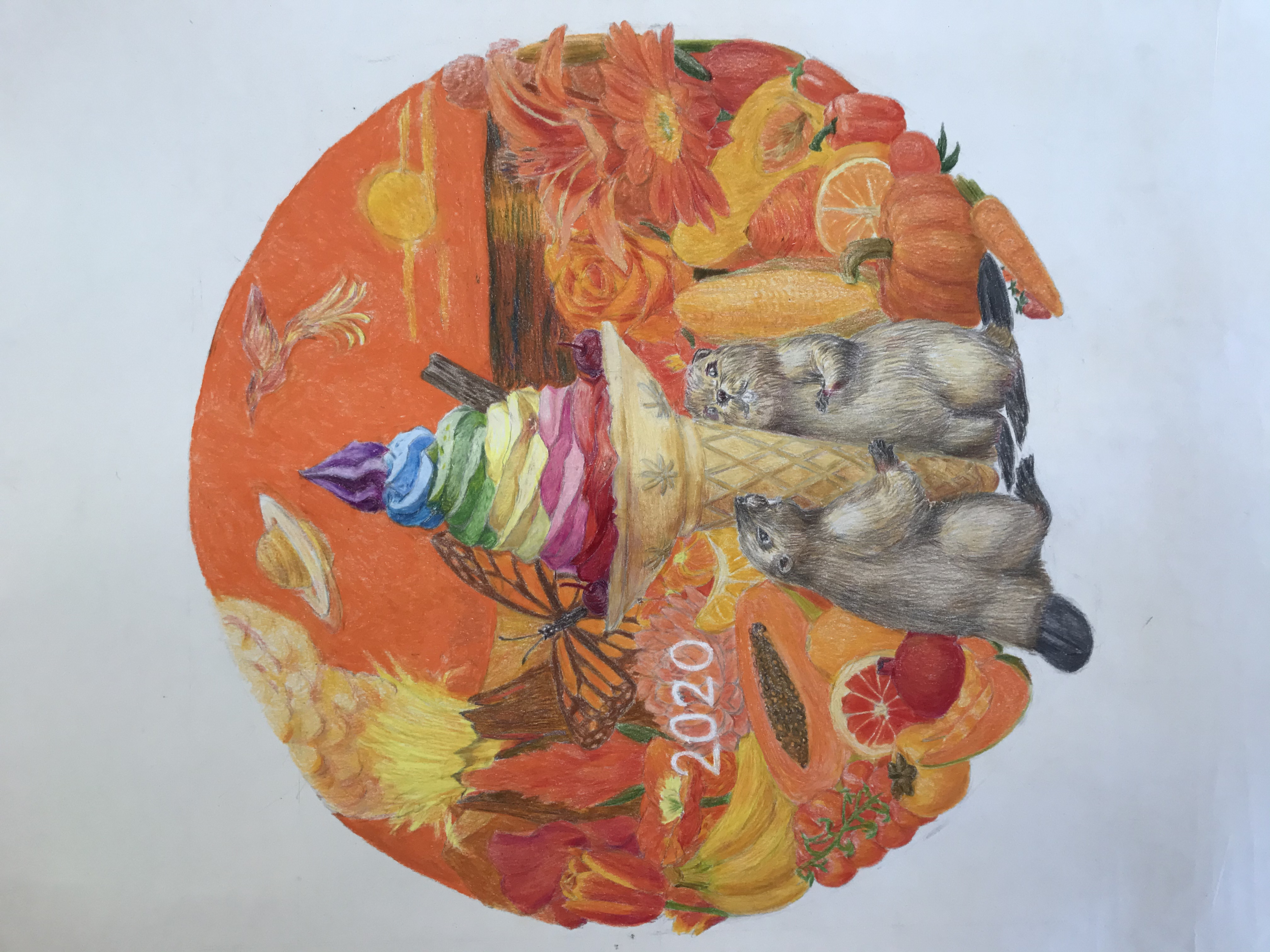
Title: Caltech Logo 2020, colourised
Medium: coloured pencils
Dimensions: 53 cm x 76 cm (21’’ x 30’’)
Description: An attempt to appreciate diversity intuitively as we do nature. Many share the same colours, and many with the same colours are very different. Our love for each other is as instinctive as our love for a delicious rainbow ice cream.
The piece should take on a different look farther away and up front. Caltech community is able to recognize the “parody” of our Caltech logo at distance: the two beavers as the hands, the ice cream as the torch. (You can juxtapose the two.) A closer look of it is meant to inspire thoughts about the symbols in the drawing: beavers as Caltechers, rainbow ice cream as a pride symbol, phoenix (a genderless legendary bird); different cultures/countries and majors (monarch butterfly, Saturn, papaya, volcano, etc.). I also want it to fit the autumn/thanksgiving theme and the ambience of Café. Though the drawing itself might take some time for one to relate to diversity, I believe it would be a light-hearted addition to other works in display.
Dr. Hristos Courellis’s Thesis defense
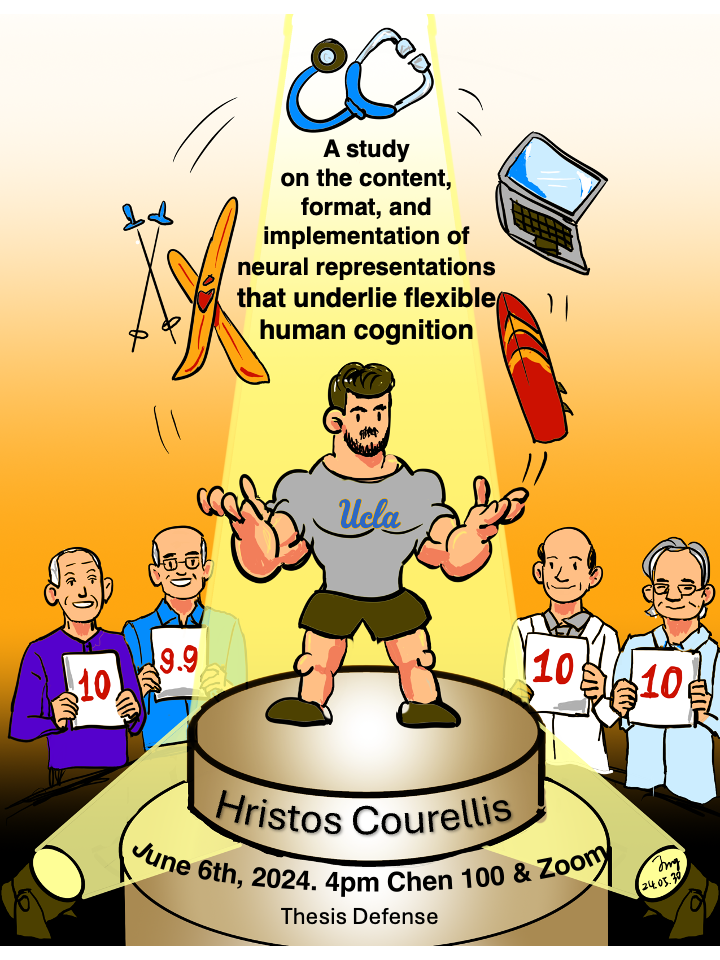
A commission received from Rutishauser lab for my friend and colleague, Hristos Courellis (PhD, ‘24)’s thesis defense.
